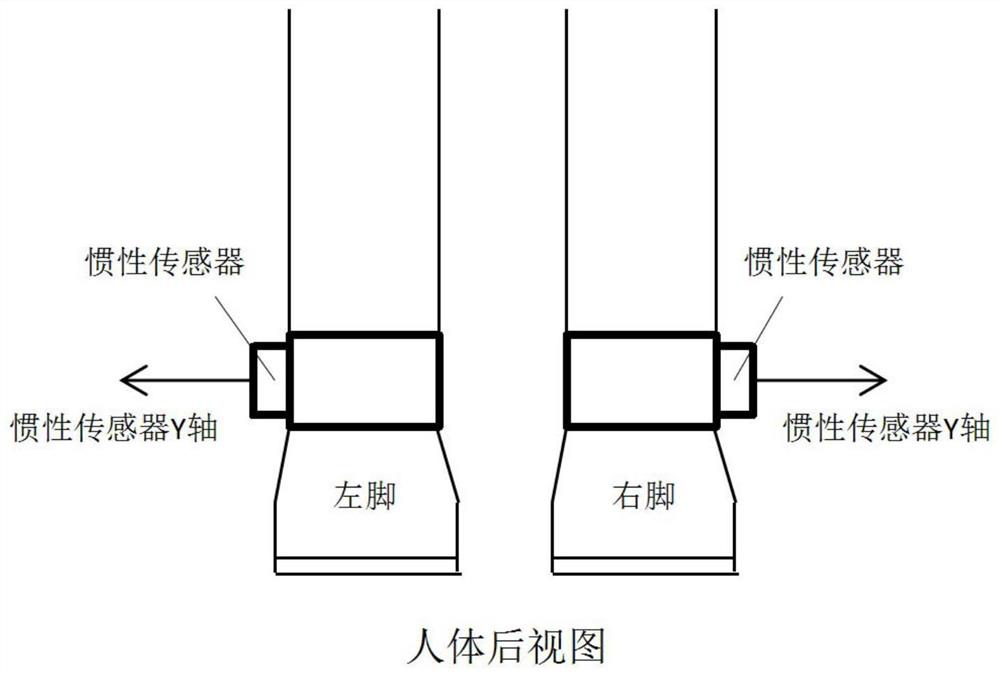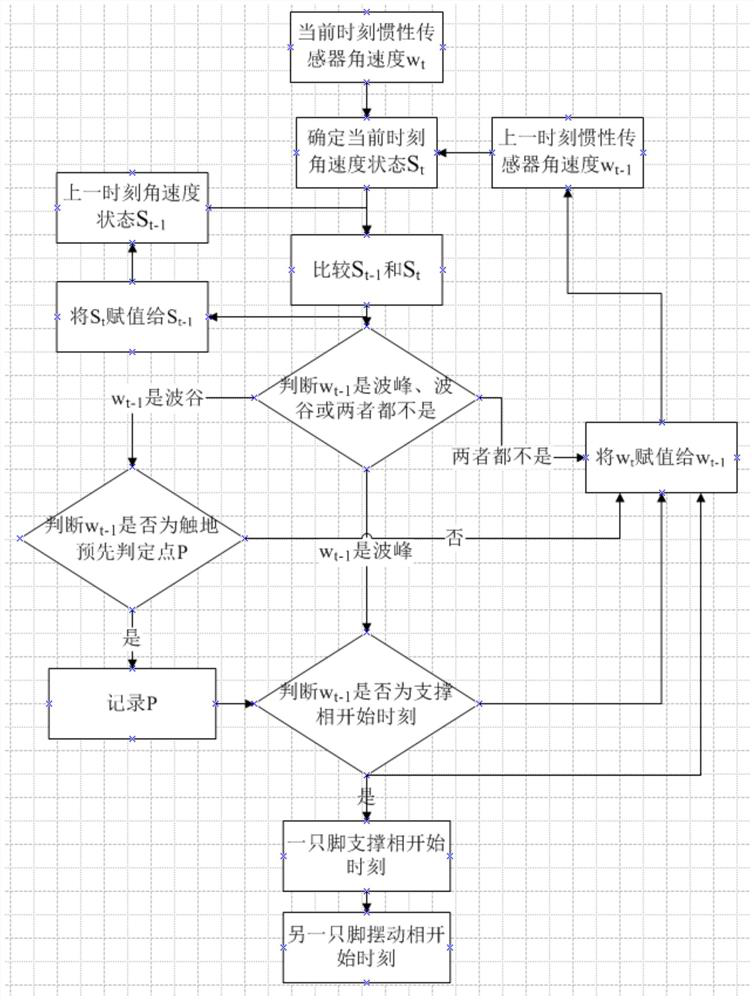A Gait Phase Recognition Method Based on Inertial Sensor
An inertial sensor and recognition method technology, applied in the field of gait phase recognition, can solve the problems of adaptive dependence, prone to misjudgment and missed judgment, poor robustness, etc., to improve robustness and ease of use, and facilitate rapid The effect of putting on and taking off and improving the robustness
- Summary
- Abstract
- Description
- Claims
- Application Information
AI Technical Summary
Problems solved by technology
Method used
Image
Examples
Embodiment Construction
[0047] The present invention will be further described in detail below in conjunction with the accompanying drawings and specific embodiments.
[0048] The invention discloses a gait phase identification method based on an inertial sensor, which utilizes the body side angular velocity collected by the inertial sensor bound at the ankle to perform extreme value discrimination. A complete gait cycle can be roughly divided into two phases, the swing state and the support state, and the support state can be divided into four stages in sequence: heel strike, full foot strike, heel off the ground, and forefoot off the ground. When in the stage of full-foot landing in the support state, the foot is relatively static relative to the ground, that is, the lateral angular velocity at the ankle is close to zero. Using the characteristic of angular velocity "touching the ground is zero", comparing the calibration results of pressure insoles, it can be seen that the entire supporting state ...
PUM
 Login to View More
Login to View More Abstract
Description
Claims
Application Information
 Login to View More
Login to View More - R&D
- Intellectual Property
- Life Sciences
- Materials
- Tech Scout
- Unparalleled Data Quality
- Higher Quality Content
- 60% Fewer Hallucinations
Browse by: Latest US Patents, China's latest patents, Technical Efficacy Thesaurus, Application Domain, Technology Topic, Popular Technical Reports.
© 2025 PatSnap. All rights reserved.Legal|Privacy policy|Modern Slavery Act Transparency Statement|Sitemap|About US| Contact US: help@patsnap.com



